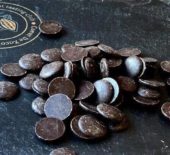If you are a shift worker, you most likely understand the effects of being awake when your body clock says you should be asleep. The impact of working against your natural body clock does not only feel less than optimal but can have a negative impact on your health. You are up to 40% greater risk of developing diseases like heart disease, obesity and type 2 diabetes as a shift worker. You may not be able to change your shift to improve your health, but you still can make positive choices to decrease your risk of developing these diseases.
It is important to understand the effect of eating at various times of the day. Studies have shown that eating earlier in the day causes your body’s blood sugar 3 hours after eating to spike much less in the morning compared to the same meal at 8pm and even higher at midnight. Secondly, your body’s ability to use insulin (the hormone which takes the sugar out of your blood) is much less effective later in the evening compared to in the morning.
So, what does this mean for you as a shift worker? There are three key points to remember:
- Eat every 4-6 hours when you are awake.
- If possible, between 10pm to 6am, have a 5-hour window when you don’t eat.
- If you find yourself not eating before you go to bed you can’t sleep because you are so hungry try eating a snack 1 –2 hours before bed.
It’s important to remember what you eat matters. Eating may assist with the nautilus feeling which can come from late night shift work but the quality of what you eat matters.
- Choose a snack with higher amounts of protein over a larger meal with higher amounts of carbohydrate.
- Instead of giving the company who owns the vending machine their income plan and pack your snacks.
- Pack slow releasing energy snacks to help you get through the shift without this can include:
- 30g (small handful) of nuts, preferably unsalted and 15g of air popped corn.
- Small tub (200g) of low or no fat yogurt and a small piece of fruit.
- A banana, apple or 2 peaches or plums (this is a serve of fruit) with one tablespoon of 100% peanut butter.
- 2-3 wholegrain crackers with a small matchbox size of low-fat cheddar cheese or ½ cup of ricotta cheese or hummus.
- Cut up carrot, celery or cucumber sticks with half a cup of ricotta or hummus to use as dip.
- A piece of whole grain toast spread with a small tin of baked beans.
- 95g of tinned fish in spring water with 2-3 crackers and some celery/carrot/cucumber sticks.
- Banana or berry smoothie (made with low fat cow’s milk or fortified soymilk, low fat yoghurt, fruit and chia seeds).
- 60g dried fruit, nut, and seed mix (e.g., dried apricots with almonds sunflower seeds and pumpkin seeds).
- Slice of wholegrain toast or English muffin with grilled cheese and avocado.
- Whole grain raisin toast extra virgin olive oil spread with a boiled egg.
What you drink matters too.
Staying hydrated during your shift is important but like food the type matters.
- Caffeine may keep you awake during your shift but with half the amount of caffeine still in your body after 6 hours may stop you from sleeping after your shift.
- For health, I aim for no more than 400mg of caffeine a day. This is around 4 standard cups or coffee or 8 cups of green, black, or white tea.
- Try drinking herbal teas instead, mineral water flavored with some lemon or orange to make the taste interesting.
- If possible, steer clear from the sugar explosion and limited benefits to your energy levels that soft drinks, juices and flavored milks provide.
If you are not sure if you are drinking enough the simplest way can be checking the color of your urine. You don’t want to ‘go for gold’ but more of a Solo drink color.
Take home message: You may not be able to control the hours of your shift, but you can make choices to support the healthiest version of you. Take these three steps and you will be feeling the difference in your life.
Reference:
Meals and meal-timing for shift workers, Gloria Leung (PhD Candidate, Accredited Dietitian) Department of Nutrition, Dietetics and Food, Monash University, Education in Nutrition Webinar (Dec 2019)








